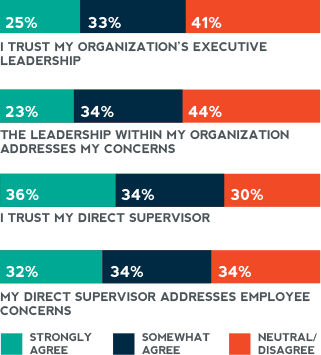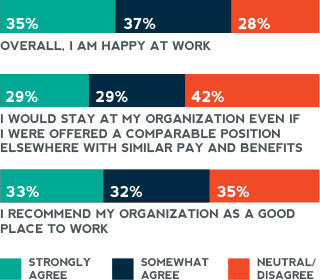If you’re not familiar with Theranos, you should be. The shocking collapse of the Silicon Valley blood testing company led by Elizabeth Holmes, has been chronicled in a documentary and podcast that shed light on a disturbing organizational culture that fostered an unparalleled level of deception and shocking treatment of its employees.
Holmes founded Theranos in 2003 after dropping out of Stanford at the age of 19 to revolutionize the U.S. healthcare industry. She raised hundreds of millions of dollars from investors centered around Edison, a device Holmes claimed would upend the $60 billion blood testing industry by requiring only a finger prick of blood to run hundreds of tests that typically require vials of venous blood. Holmes even inked a multimillion-dollar deal with Walgreens and had an all-star board of directors—from former Secretary of State George Schultz to Secretary of Defense James Mattis. All the while, the company was basking in the glow of Wall Street and global media hype that positioned Holmes as the next Steve Jobs.
The only problem—the devices didn’t work. Instead, Theranos was using traditional blood testing methods and equipment, and even sending customers wildly inaccurate test results. It all came crashing down in 2015 when a Wall Street Journal article exposed the problems with Theranos’ technology and triggered investigations. At its peak, investors valued the company at $9 billion, making Holmes (on paper) the youngest self-made female billionaire.
It all came crashing down in 2015 when a Wall Street Journal article exposed the problems with Theranos’ technology and triggered investigations.
Indeed, both the podcast and documentary are riveting and disturbing. The corporate tale is so compelling that I read Bad Blood, the book by Wall Street Journal reporter John Carreyrou who first publicly exposed the fraud. I wanted to understand more fully how Holmes was able to sustain for more than a decade such an incredibly toxic work environment that hid the truth.
I’m particularly drawn to the Theranos story because Eagle Hill is drilling down to understand how big of a factor culture is in terms of driving business performance. In a national survey, we found that employees understand its effects—63 percent say it directly impacts their organization’s success. And, as Figure 1 shows, the majority of U.S. workers believe it influences much of their job performance, including: doing their best work (77 percent), their productivity and efficiency (76 percent) and their ability to best serve customers (74 percent).
Figure 1: Employees say workplace culture impacts their:

77%
Ability to do their best work

76%
Productivity/ efficiency

74%
Ability to best serve customers

73%
Commitment to help achieve their company’s goals

70%
Commitment to ethical behaviors

67%
Innovation and creativity
Question: Does the culture at your workplace impact your (agree, neutral, disagree)?
Source: The Eagle Hill Consulting Workplace Culture Survey 2018
Importantly, a critical takeaway of the research is that there is a major gap between employees’ recognition of the importance of culture and how they experience it daily at work. That was the case at Theranos, where ethical employees were toiling in a culture that was deceiving customers, partners, investors and regulators. In the staff interviews in the documentary and podcast, it’s clear that employee actions were shaped by what Holmes had nurtured—a culture of fear. That had two main impacts—it drove employees out the door or they were complicit—knowingly or unknowingly—in the Theranos scam.
Here are three culture takeaways from the Theranos scandal that are relevant to all leaders and employees.
1. Fear a Culture of Fear
Holmes fostered a culture of fear because it served her needs. Early on, experts inside and outside of the company questioned the technology. As years went by, whenever employees or experts raised warnings, Holmes and her “enforcers” systematically either shut down, ignored, bullied or threatened those who dared to question Theranos.
Some speculate that perhaps her idea could have worked, but there wasn’t a productive and honest dialogue or collaboration to work through issues or problems. Knowing there would be repercussions—lawsuits or getting fired—employees just seemed to keep their heads down and go along with the charade, thereby enabling the sham to continue for years.
Perhaps the biggest red flag for culture issues is when fear is a driving force—either on a team or as a leadership style. In fact, some leaders don’t even recognize they are cultivating fear or see the harm. Ultimately, fear results in bad decisions and hinders success. To understand if fear exists, companies must engage in a regular and honest dialogue with employees to understand if there is even a hint of fear in their culture. And that probably means allowing for anonymous input where employees at all levels can openly share views and concerns.
Figure 2: Leaders are the most important ambassadors of workplace culture, but only one in four employees strongly agrees that they trust executive leadership.

Question: To what degree do you agree or disagree with the following statements about the company or organization you work for?
Source: The Eagle Hill Consulting Workplace Culture Survey 2018
2. Watch the Walk Aways
In the early days of Theranos, Holmes raided companies like Apple of their biggest stars. She hired one of the most powerful advertising agencies. Holmes brought on globally respected scientists.
But when these bright minds were slapped down for productive dissent, they walked away. These powerhouse stars had the power to leave—perhaps because they had the financial or reputational stability to do so. Even the advertising agency wasn’t sure they could validate the product claims, and they eventually dropped the account. The rate at which well-respected professionals left the company should have set off alarm bells, but it didn’t.
Leaders should carefully watch their attrition. Why are employees leaving? Maybe it’s the pay or the job is a wrong fit. But maybe there are bigger issues. Ensuring there is a process in place for candid exit interviews is the first step. Again, these may need to be anonymous. If toxic culture trends are emerging, it’s time to diagnosis the culture problem and take action.
Figure 3: The happier employees are at work, the more likely they are to stay even if offered a position with similar salary and benefits elsewhere.

Question: To what degree do you agree or disagree with the following statements about the company or organization you work for?
Source: The Eagle Hill Consulting Workplace Culture Survey 2018
3. Manage and measure your culture
Leaders often shy away from measuring culture because it seems nebulous and they struggle to assess and manage it. For certain, Holmes seemed intentional about cultivating a culture of fear, and that’s likely NOT the intent of most credible leaders and companies.
But what if a culture of fear—or any other type of unproductive culture that is harmful to your business—is taking root? Maybe there’s a rogue leader or misaligned team that is permeating the company. It’s not a far-fetched idea—just think about the ongoing Wells Fargo saga. To ensure a healthy workplace, leaders must clearly define, promote, assess and re-tool their culture as needed. This means making it someone’s job to create mechanisms and hold every single employee accountable for living the culture.
Together, these five elements set the foundation for a workplace culture primed for success:

Core values are an organization’s fundamental beliefs that should guide decision making and actions.

Leadership guides an organization’s overall direction and embodies its core values.

Relationships are the connections and trust that individuals build with their colleagues at work.

Authenticity is how genuine employee and organizational behaviors are.

Satisfaction is how content employees feel at work.
For certain, the Theranos scandal is an outlier and its culture problems are unique. But in hindsight, the problems that now seem glaringly obvious were masked and allowed to fester for years. And that makes Theranos the perfect case study for leaders to dissect to avoid making the same errors. Surely, the Theranos case won’t happen again—but didn’t we say that about the financial fraud at companies like Enron and WorldCom?

